Disrupting for Good: AI, ...
Online Conference
28 Jan 2026 / 29 Jan 2026 read more
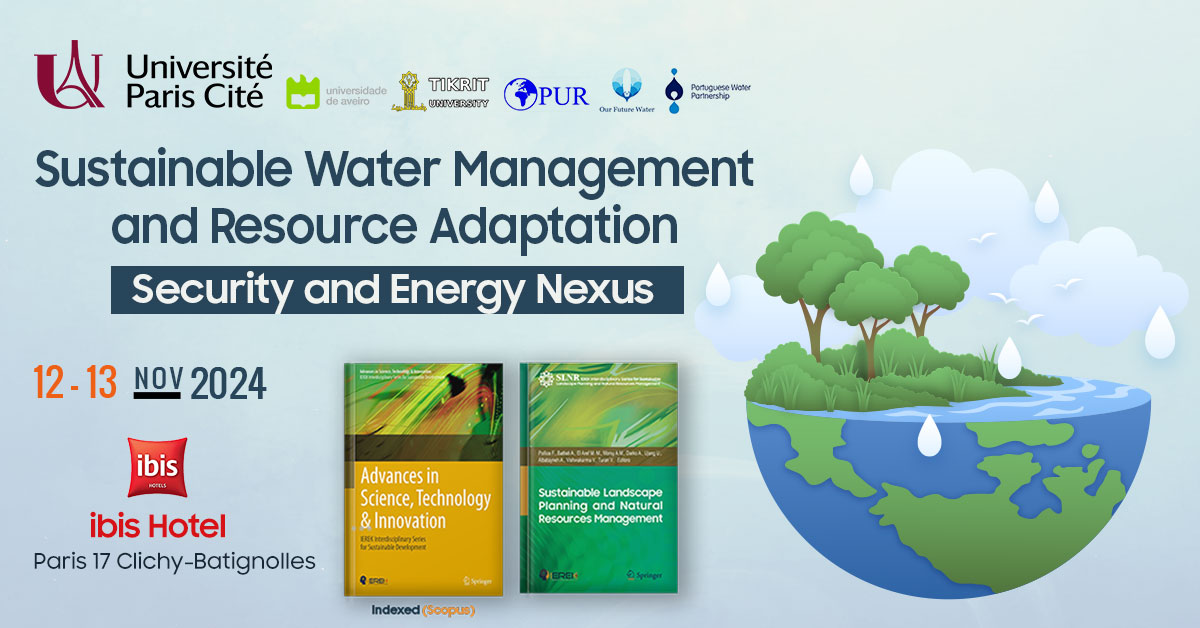
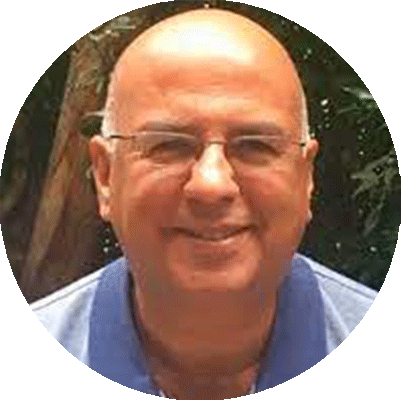
Research Director Université Paris Cité & CNRS (UMR 7086), ITODYS Lab
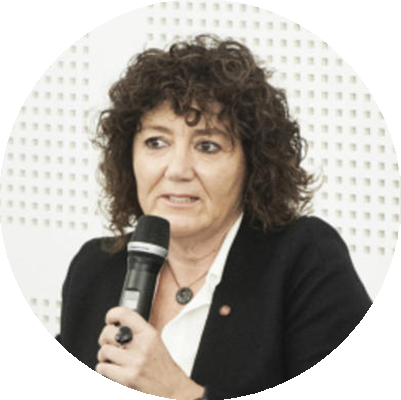
Full Professor of Raw Materials Engineering, Department of Chemical Engineering Materials & Environment, Sapienza University of Rome

Full Professor of Biogeochemistry of Engineered Ecosystems, Institute of Earth Physics of Paris, France
Raneem
Conference Coordinator
[email protected]
(+20) 3 5763827 | (+20) 3 5763828
(+20)1000028021
Subscribe to our newsletter
The first International Conference on Sustainable Water Management and Resource Adaptation: Security and Energy Nexus was held in Paris, France, from November 12–13, 2024. Organized in collaboration with Université Paris Cité as the main host and Tikrit University as a co-host, the conference adopted a hybrid format, welcoming participants from around the world both in-person and online.
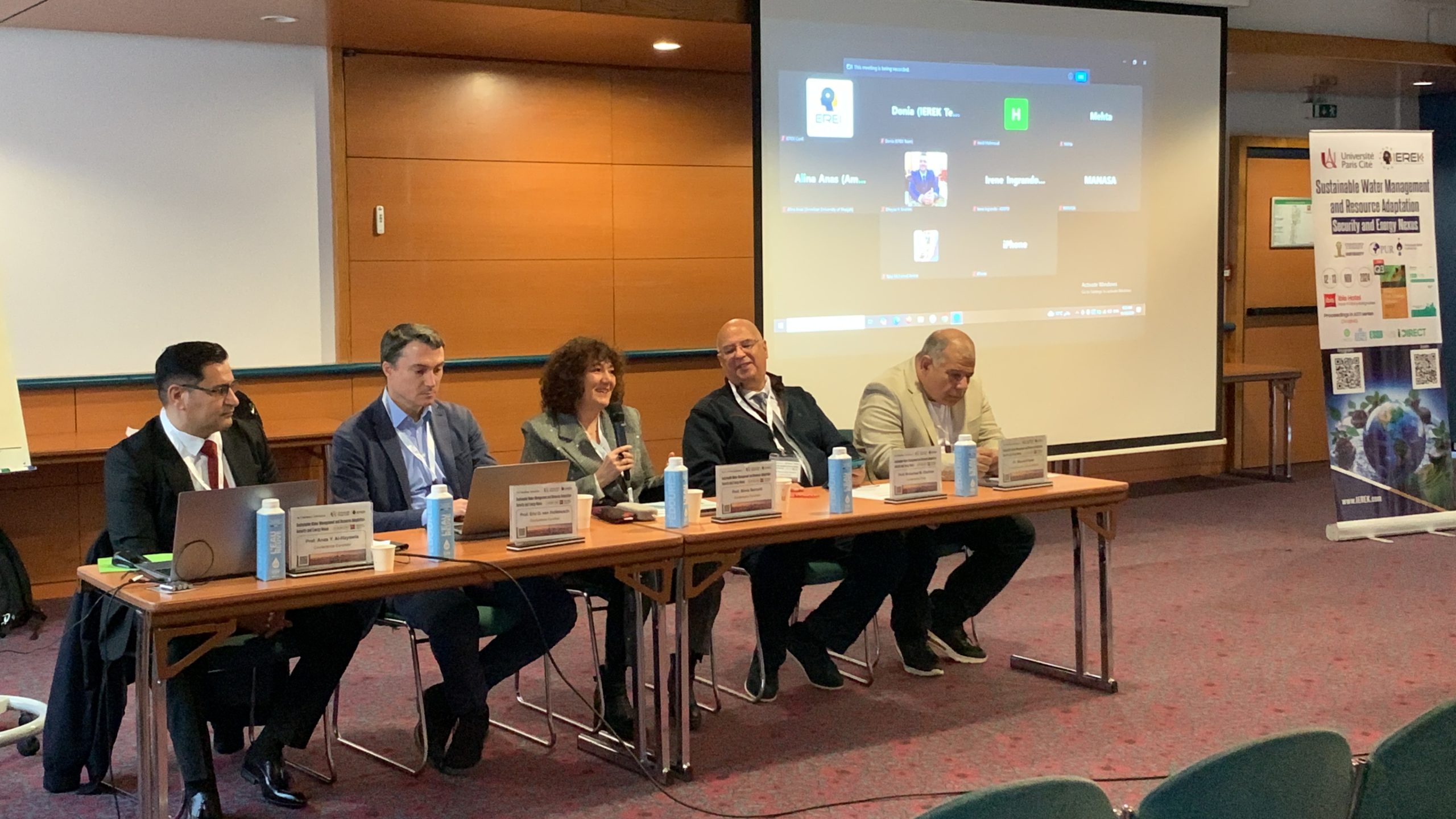
The event featured an extensive range of topics related to sustainable development, including:
1- Water Landscape Systems: Characteristics and Functions
2- Water Conservation Techniques in Landscapes and Agriculture
3- Ecosystem Resilience in Changing Water Landscapes
4- Protecting Water Quality in Changing Landscapes
5- Nanomaterial Innovations for Sustainable Water Treatment and Conservation
6- Water Security and Management
7- Water-Energy-Efficient Technology
8- The Energy Nexus
Day 1 Highlights
The conference began with a Welcoming Session, including online registration and opening speeches by the conference chairs and co-chairs:
• Prof. Mohamed M. Chehimi, Conference Chair & Research Director, Université Paris Cité & CNRS (ITODYS Lab)
• Prof. Eric D. van Hullebusch, Full Professor of Biogeochemistry of Engineered Ecosystems, Institute of Earth Physics of Paris, France
• Prof. Silvia Serranti, Full Professor of Raw Materials Engineering, Sapienza University of Rome, Italy
• Prof. Anas Y. Al-Hayawia, Biology Department, Tikrit University, Iraq
• Dr. Mourad Amer, CEO of IEREK
A brief presentation followed, introducing IEREK’s mission and activities. The Plenary Session featured a keynote speech by Prof. Khalid Hashim (Liverpool John Moores University, UK) titled “The Future of Water: Technological Advances in Monitoring and Treatment.” This was followed by a series of research presentations delivered by authors in person and online, with dynamic Q&A sessions engaging both audiences. The day concluded with a Panel Discussion, where participants shared reflections and provided feedback on the sessions.
Day 2 Highlights
Day two began with keynote speeches by:
• Prof. Manuela Antonelli, Politecnico di Milano, Italy, on “Emerging Contaminants in Water: Integrated Approaches to Reduce Environmental and Human Health Risk”
• Prof. Virgil Andrei, University of Cambridge, UK, on “Perovskite-Based Artificial Leaves for Solar-to-Chemical Synthesis”
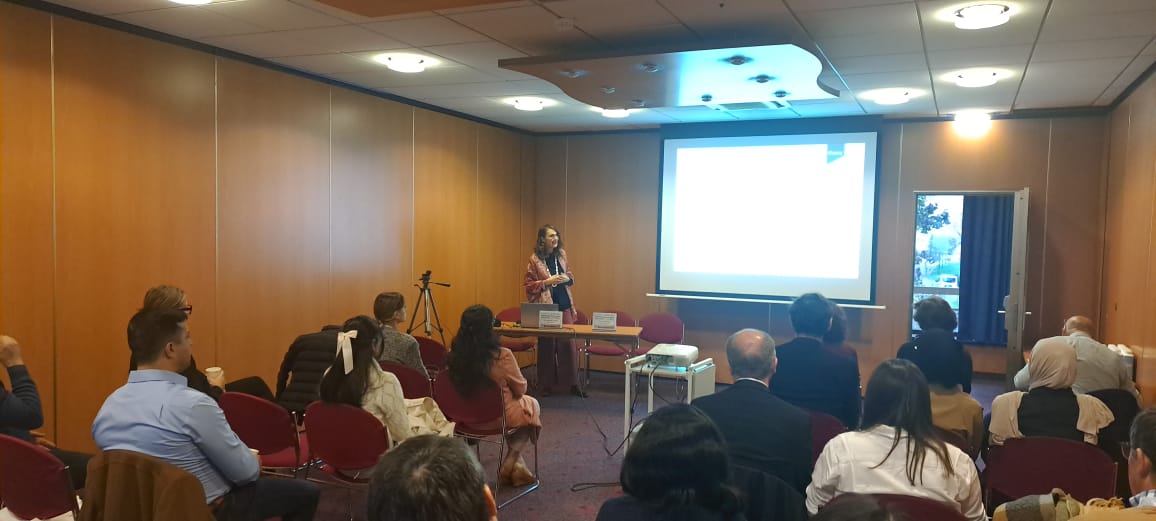
The day continued with four sessions:
1- Technological Innovations and Water-Energy Efficiency
2- Environmental and Ecological Challenges in Water Management
3- Climate Change Impacts on Water Security and Resilience
4- Water Resource Modeling and Urban Management
The conference concluded with a Closing Ceremony, summarizing the key outcomes and discussions, and leaving participants with new insights and opportunities for collaboration.
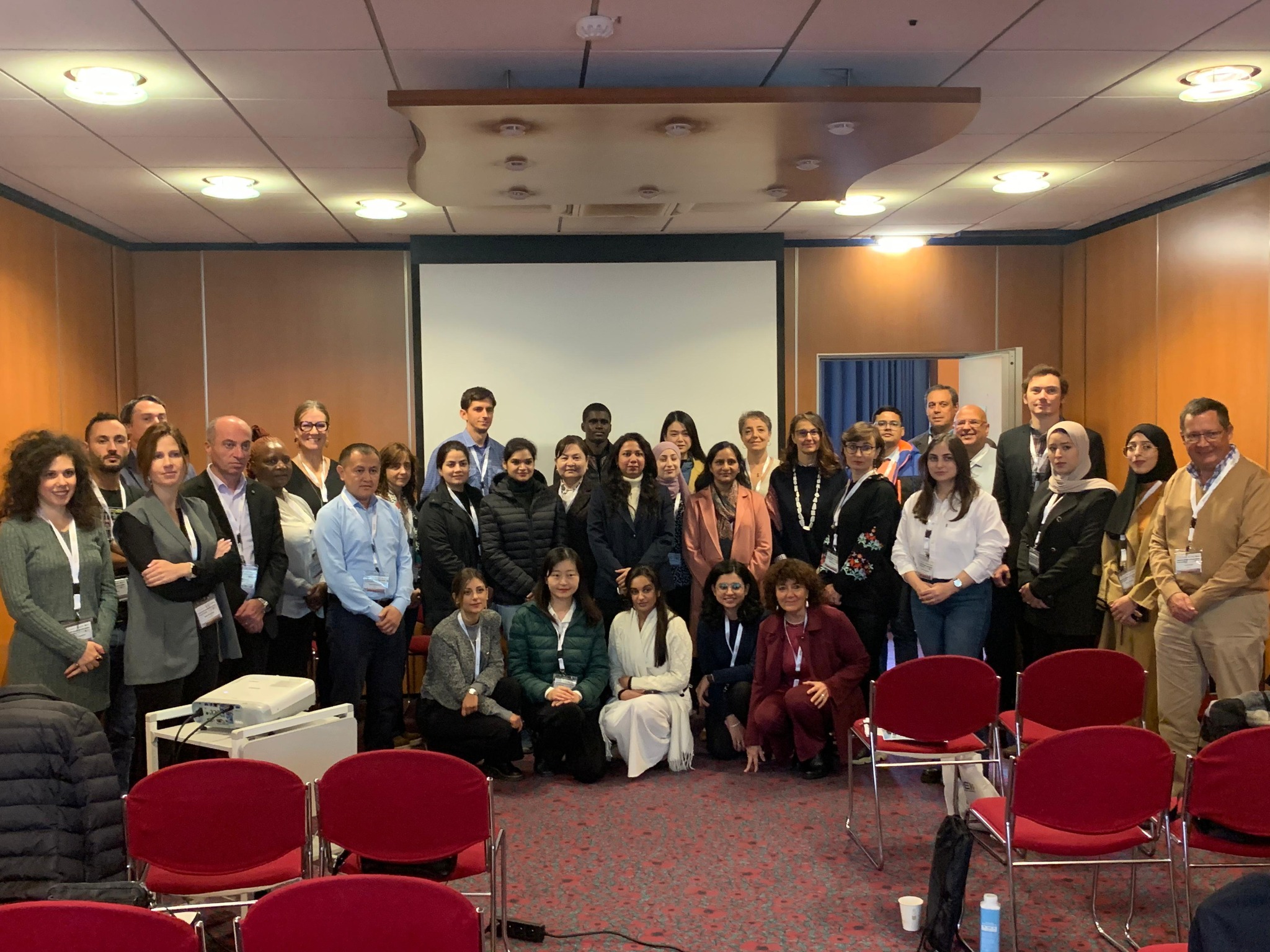
Water lies at the heart of adaptation to climate change and serves as a crucial link between climate systems, human society, and the environment. It is a finite and irreplaceable resource that is fundamental to human well-being. Various necessary adaptation measures that deal with climate change have the potential to create resilience to climate change and enhance water security. Sustainable governance of available surface and groundwater resources is key to solving water problems.
To achieve water sustainability, we must promote the restoration and protection of freshwater ecosystems. This can involve measures such as reducing pollution, implementing sustainable land use practices, and creating protected areas for aquatic species. Additionally, we must adapt to the climate change crisis by improving water efficiency, investing in water infrastructure, and developing new water sources. This can involve measures such as implementing water reuse and recycling programs, upgrading water treatment facilities, and investing in desalination technologies.
Analysis of river basin scale adaptation is also critical for water management, as it involves assessing the impacts of climate change on water resources and developing strategies to manage these impacts. We must take a holistic and integrated approach to water management, including improving water governance, establishing regulations for water use, and providing funding for water infrastructure. By engaging stakeholders from different sectors and levels of government, as well as local communities, we can develop effective water resource policies that promote sustainable water use and ensure that water resources are managed for the benefit of all.
Join us, at the 1st international conference on "Sustainable Water Management and Resource Adaptation: Security and Energy Nexus" to discuss modern research on water adaptation, sustainability, and climate change mitigation. The conference aims to form an interdisciplinary discussion and harbor the latest research in the field, hosting researchers, scientists, geographers, engineers, professionals, and policymakers, all to preserve the most valuable resource of all.
The conference "Sustainable Water Management and Resource Adaptation" is held in collaboration with the Université Paris Cité, France. While attending the conference in Paris, international participants from all over the world have the unique opportunity to not only expand their knowledge and expertise but also enjoy the breathtaking beauty of this beautiful city. Known as the "City of Love," Paris is renowned for its romantic ambiance, rich history, and stunning architecture. Amidst the conference sessions and networking events, attendees can explore the charming streets, visit world-famous landmarks like the Eiffel Tower and Louvre Museum, and stroll along the Seine River, submerging themselves in the enchanting atmosphere that Paris offers. With its picturesque parks, elegant boulevards, and delightful cafes, Paris provides the perfect backdrop to relax, gain inspiration, and appreciate the city's timeless allure while engaging in meaningful discussions about sustainable water management and resource adaptation.
The conference will provide a platform for sharing knowledge, experiences, and best practices related to water sustainability and adaptation. Participants will have the opportunity to present their research and case studies, engage in interactive discussions and workshops, and network with other professionals in the field. The conference will also feature keynote speeches from leading experts in water management and climate change. The conference discusses topics such as freshwater ecosystem restoration, adaptation methodologies to changing climates, water resource policies, economic benefits of water adaptation, and meteorology and weather warning systems. The conference aims to contribute to the achievement of the UN’s 6th Sustainable Development Goal, which calls for ensuring access to water and sanitation for all and promoting sustainable water management. By bringing together diverse perspectives and expertise, the conference will seek to identify innovative solutions and actionable strategies for promoting water sustainability and adaptation at local, regional, and global scales.
The purpose of this conference is to promote knowledge exchange and collaboration among academics, practitioners, policymakers, and other stakeholders working to promote water sustainability and adaptation in the face of climate change. The conference aims to foster dialogue and exchange of ideas among participants, to identify innovative solutions and actionable strategies for promoting water sustainability and adaptation at local, regional, and global scales. The conference will provide a platform for presenting research and case studies, engaging in interactive discussions and workshops, and networking with other professionals in the field. The ultimate goal is to create a community of experts that can drive progress toward water sustainability and adaptation in the years to come.
To ensure ecosystem health, it is important to identify key indicator species. Additionally, evaluating the potential of biodiverse hotspots can contribute to their conservation. Holistic approaches to watershed planning and management are crucial for sustainable water resource management. Monitoring and early detection systems for algal blooms are necessary to mitigate their ecological consequences. Recognizing the aesthetic and recreational values of water landscape systems, and adopting appropriate design and planning principles is essential for the effective management of water landscape systems.
Discusses water management principles and approaches that are crucial for sustainable water resource management. The integration of soil moisture sensors in precision agriculture allows for efficient water use. Sensor-based irrigation provides economic benefits and helps protect the environment. Implementing polyculture and crop rotation techniques promotes water-efficient farming practices. Agroforestry practices contribute to sustainable agriculture by enhancing water conservation. Finding genetic engineering offers potential solutions for developing drought-tolerant, water-optimized crops.
Discusses the Microbial contributions within aquatic systems, ensuring the availability of essential elements. Adapting co-management approaches to ensure the effectiveness in ecosystem conservation, promoting sustainable practices to enhance biodiversity preservation. Facing the Urban biodiversity conservation challenges, presenting the opportunities for innovative solutions and community engagement. Using Techniques for ecological restoration of damaged aquatic habitats is essential to revive and rehabilitate these ecosystems. Identifying and preserving keystone species in aquatic environments is vital as they have a significant impact on the overall ecological balance and functioning of the ecosystem.
Discusses technological and sustainable solutions for freshwater production from seawater, considers the environmental impact assessment, ensures sustainable resource management, and spots the light on blockchain technology to provide a transparent and efficient platform for water quality monitoring and management. It also discusses the robotic systems that have been developed for precise and efficient underground pipeline inspection, minimizing human intervention, and improving maintenance processes. Additionally, it inspects the increasing reliance on AI-driven water infrastructure and presents cybersecurity challenges that need to be addressed to safeguard critical systems and data.
This part Covers diverse topics such as designing floating infrastructure for flood-prone areas, integrating blue-green infrastructure, quantifying the economic benefits of such solutions, crisis-responsive infrastructure planning, floodplain restoration, and green infrastructure approaches. Additionally, it explores infrastructure resilience in indigenous and local communities, addressing their unique challenges and identifying strategies for enhancing resilience and well-being.
This part covers key topics on the conservation of aquatic biodiversity. It includes corridor conservation strategies for aquatic and terrestrial linkages, climate change impacts on aquatic biodiversity, conservation genetics for endangered species, designing nature-based solutions for aquatic biodiversity, and the conservation of endemic and threatened aquatic species. These discussions aim to highlight effective approaches and strategies for preserving and protecting aquatic ecosystems and species.
This part covers a range of topics related to climate change and its impact on various ecosystems and sectors. It includes ocean acidification and its effects on marine ecosystems, smart practices for climate-resilient agriculture, adaptation strategies for coastal communities, the impact of climate change on biodiversity hotspots, heatwaves and thermal pollution in water bodies, changing precipitation patterns and hydrological impacts, and resilient infrastructure design to address climate-induced water quality challenges. These discussions aim to deepen our understanding of climate change impacts and explore effective strategies for mitigating and adapting to them.
This part covers diverse topics on water quality and pollution mitigation. It includes microplastic pollution sources, pathways, and mitigation strategies. Nature-based solutions for water purification, remote sensing for water quality monitoring, and sustainable water quality practices in urban areas will be discussed. Additionally, community engagement in water quality protection and cost-benefit analysis of such measures will be explored, highlighting the importance of collaborative efforts and economic considerations in preserving water resources.
This part provides a comprehensive exploration of the water-nanomaterials interface. It covers topics such as properties, characteristics, and interactions, as well as the structure and properties of nanoscale materials. it also discusses self-assembly, applications in catalysis and energy conversion, surface charge and energy, water-material interactions, nanomaterials for water treatment and filtration, and nanoparticle dispersion and stability in aqueous environments.
Covers Sustainable water materials including fixtures, rainwater systems, and smart irrigation tech. Nanoscale water has unique properties. Purification methods involve filtration, disinfection, desalination, and treatment. Membrane technologies like nanofiltration, ultrafiltration, and reverse osmosis are crucial. Carbon-based nanomaterials adsorb pollutants and aid membrane development. Metal-based nanomaterials remove contaminants and have antimicrobial properties. Nanocomposites offer diverse water remediation properties. Bio-inspired materials enable water harvesting. Considers the environmental impact and safety of nanomaterials.
This part explores the interactions of nanomaterials with water and their diverse applications. It covers topics such as nanocomposites for water filtration and biomedical devices, functionalization of metal nanoparticles and their stability in water, metal oxide nanoparticles for water treatment and environmental remediation, hydrophilic or hydrophobic interactions of carbon-based nanomaterials, modulation of water solubility and stability of quantum dots for biological applications, and the use of nanofibers in water filtration and textiles. it sheds light on the wide-ranging potential of nanomaterials in various water-related fields.
This part explores diverse applications of nanomaterials in water-related fields. It covers biosensors and bioanalytical approaches for water analysis, nanomaterials for agriculture and irrigation, their use in the food and beverage industry, industrial water treatment, personal care products and cosmetics, self- assembly and structured materials for water-nanomaterials systems, nanomaterials for sensing and monitoring water quality, efficient hydrogen production from water, and photocatalytic and solar-driven water splitting. It showcases the broad range of possibilities and advancements in utilizing nanomaterials to address various challenges and opportunities in the realm of water.
This part discusses nanomaterial-based solutions for the water-energy nexus, nanomaterials for water splitting and hydrogen production, nanomaterials for energy storage in water-based systems, water- based electrochemical devices and nanomaterials, techno-economic analysis of nanomaterials-based water technologies, regulatory and policy considerations for nanomaterials in water applications, challenges and opportunities in scaling up nanomaterials-based solutions, future directions and emerging trends in water-nanomaterials interface. Through this part, a comprehensive understanding of the diverse applications of nanomaterials in water-related sectors is provided.
This part explores diverse applications of nanomaterials in addressing water-related challenges. It covers topics such as rainwater harvesting, greywater treatment, water recycling and reuse, water conservation, addressing water scarcity in arid regions, water pollution mitigation in urban settings, climate change impacts on water resources, and environmental and health considerations. it highlights the potential of nanotechnology in providing innovative solutions for various water-related issues.
This part provides an overview of water-splitting technologies and explores their significance and potential. The global energy landscape is examined, considering current trends and prospects. challenges and opportunities in this field are explored, offering insights into potential advancements. The historical development of water-splitting technologies is traced, showcasing their evolution over time. Overall, it provides a comprehensive exploration of water-splitting technologies and their impact on the global energy landscape.
This Part focuses on its principles, components, and energy efficiency. It explores topics such as voltage over potential, thermodynamics of water splitting, Gibbs free energy, and thermodynamic efficiency limits. Factors influencing thermodynamic efficiency and catalysts for enhancing reaction kinetics are discussed. Additionally, it explores the kinetics of water splitting, activation energy reactions, reaction mechanisms, and rate equations. Overall, it covers various aspects of electrolysis and its associated processes.
This part covers water electrolysis and encompasses various aspects, including alkaline water electrolysis, proton exchange membrane (PEM) electrolysis, and solid oxide electrolysis cells (SOEC). Key considerations involve electrode materials, catalyst performance optimization, and challenges in cell design. Additionally, ceramic electrolyte materials, operating temperatures, and conditions play a crucial role in system integration and performance improvement. Photoelectrochemical water splitting, semiconductor materials, band gap engineering, light absorption, charge separation, and photoelectrode design are also explored for efficiency enhancement and stability in this field.
This covers catalysts for the hydrogen evolution reaction (HER) and the oxygen evolution reaction (OER). Catalyst synthesis and characterization, including noble and non-noble metal catalysts. Differentiating between heterogeneous and homogeneous catalysts is also crucial. Molecular catalysts are explored, focusing on testing, evaluation, performance, and durability. Advanced materials are developed to enhance electrode and membrane performance, while electrode and ion-conductive materials are studied. Moreover, materials characterization, compatibility, and stability techniques are employed to assess and ensure the reliability of catalysts and materials.
This part explores the field of large-scale water electrolysis plants focusing on industrial-scale electrolyzer technologies, grid integration, and the utilization of renewable energy sources. Economic viability and market analysis are conducted through case studies of such plants. Integration with renewable energy sources. Power-to-gas and power-to-liquid applications are investigated, along with hybrid systems and synergistic approaches. Hydrogen production, reactions, and their industrial applications are examined, including on-site hydrogen generation. Power-to-hydrogen applications encompass ammonia, methanol, syngas, and the production of various chemicals and fuels.
This part focuses on assessing the operation, maintenance, and capital costs associated with these technologies. The levelized cost of hydrogen reduction strategies is evaluated to determine economic feasibility and market outlook. Life cycle assessment is conducted to analyze the environmental impacts of water splitting processes, including goal and scope, life cycle inventory, impact assessment, and sensitivity analysis. Environmental footprint and sustainability metrics are considered, along with water footprint and consumption, energy efficiency, renewability, carbon footprint, and greenhouse gas emissions.
This part focuses on critical aspects of water management and governance. It covers topics such as drought management and mitigation strategies to address water scarcity and stress. The impacts of climate change on water availability and the importance of water demand forecasting and management are discussed. Transboundary water management, institutional frameworks, water rights, and allocation systems are explored. Moreover, integrated water resources management, including watershed management and protection, water balance, accounting systems, and quality monitoring and assessment are examined to ensure sustainable water management practices.
This part focuses on the intersection of water and energy in the agricultural sector. It covers topics such as energy-efficient irrigation techniques and materials, and the water footprint in agricultural production. The potential for bioenergy production from water-intensive crops is explored. Renewable energy applications in water treatment, including solar-powered water purification systems and wind energy in desalination, are discussed. Bioenergy-driven wastewater treatment processes are also examined. Furthermore, energy-efficient water distribution systems, including smart water grids and leak detection technologies, and energy optimization in water pumping and distribution through demand-side management for water utilities are addressed.
This part explores advanced materials and technologies for water treatment and purification and covers carbon-based adsorbents for contaminant removal and functionalized nanomaterials for water treatment applications, including nanostructured membranes for selective filtration and bio-inspired materials for water filtration. Membrane technologies such as reverse osmosis membranes for desalination and forward osmosis membranes for water reuse are explored. Nanomaterials, including nanofiltration membranes, are examined for heavy metal removal. In addition, the use of nanocatalysts for advanced oxidation processes and water quality monitoring is discussed.
This part focuses on innovative approaches in water-energy systems, covers w-energy desalination processes, including capacitive deionization for salt removal, and discusses energy recovery from wastewater treatment through anaerobic digestion for biogas production and microbial fuel cells for electricity generation. Heat recovery from wastewater for energy reuse is explored. Smart water management systems, Internet of Things (IoT) applications in water management, and real-time monitoring and control of water networks are discussed. Also, predictive analytics for water infrastructure optimization are examined to enhance efficiency and sustainability in water-energy systems.
This part focuses on natural and nature-based solutions for water harvesting and treatment, including constructed wetlands for wastewater treatment and riparian zone restoration for water quality improvement, covering soil and groundwater remediation through phytoremediation and sustainable groundwater management, including monitoring and modeling. Groundwater pollution prevention measures are explored. Water reuse and recycling, including greywater recycling for non-potable uses, as well as industrial wastewater treatment and reuse, are discussed. Furthermore, direct potable reuse technologies and regulations are examined to promote safe and sustainable water reuse practices.
This part examines technology adoption in water management, addressing barriers like financial challenges. It explores business models, financing mechanisms, and public-private collaborations for commercialization and knowledge sharing. Capacity-building programs and social/behavioral aspects of adoption are discussed. Topics include data-based technologies, software, innovations in monitoring and sensing, resilience in water systems for climate change, risk assessment, infrastructure, and decision support.
This part of the conference discusses various disciplines and themes related to sustainable water ecosystems and health. It discusses environmental biology as it examines how organisms interact with their surroundings, including the physical, chemical, and biological factors that influence their survival, behavior, and evolution. This part of the conference also discusses environmental and green chemistry, environmental engineering, Earth and environmental science and water-based diseases.
| Title | Date |
|---|---|
| Abstract Submission Deadline (Round 3) | 25 Aug 2024 |
| Letter of Visa (for delegates who need visa entry) *payment required | 25 Aug 2024 |
| Last Notification for Abstract Acceptance & Approval to present | 30 Aug 2024 |
| Early Payment Deadline | 10 July 2024 |
| Regular Payment Deadline | 20 Sep 2024 |
| Extended Abstract / Short Paper Submission Deadline | 15 Oct 2024 |
| Notification of acceptance/ rejection of submitted extended abstract/ short paper | 25 Oct 2024 |
| Late Payment Deadline | 10 Oct 2024 |
| Conference Program | 15 Oct 2024 |
| Conference Launch | 12 Nov 2024 |
The registration fee does not cover accommodation or travel expenses. A list of accommodation options can be suggested by our team if available. Please contact [email protected] for inquiries.
We recommend that all authors take advantage of the benefits that IEREK offers, including various attendance types, publishing opportunities, and opportunities for discounts and waivers.
We are pleased to inform all applicants that they can use their previous publications to register for an IEREK membership, which offers a special discount.
IEREK offers a special discount to applicants from collaborative universities that have signed an MoU with IEREK to host or co-host one of its conferences.
IEREK also provides special discounts to authors from low and medium-income countries.
IEREK offers many alternative venues for publication. All accepted submissions to the conference, after a rigorous double-blinded peer-review process by the respective and highly-distinguished Editorial Board, will be published through one of the following venues:
Selected papers (according to the preference of the author) will be published in one of the Scopus-indexed or Web of Science-indexed book series or through related journal special issues. See the publishing opportunities section.
Accepted papers (according to the preference of the author) will be published through the Springer book series or through a special issue in one of the IEREK press open-access Journals.
IEREK offers many types of registrations that are diverse in registration fees; applicants can choose the type they are familiar with as follows:
Participants who are PhD holders, post-doctoral researchers, and universities’ affiliated professors and experts in the field.
Must provide proof of enrollment in a university by providing an enrollment certificate and/or a valid university ID (with issue/expiry date) etc.
Participants who are not affiliated with universities such as practitioners, policymakers, entrepreneurs, etc.
Have access to the event to enjoy the discussions, coffee breaks, and lunch as a co-author or audience.
An author may need to attend the conference for presentation only to present a research idea without publication or full paper submission; the fee in this case will be decreased.
| Type of Registration | Early Payment Deadline 10 July 2024 |
Regular Payment Deadline 20 Sep 2024 |
Late Payment Deadline 10 Oct 2024 |
|---|---|---|---|
| Scopus indexed-ASTI Book by Springer | |||
| Student | 300 € | 350 € | 400 € |
| Academic | 350 € | 400 € | 450 € |
| Professional | 400 € | 450 € | 500 € |
| Co-author/ Audience | 150 € | 200 € | 250 € |
| SLNR Book by Springer | |||
| Student | 250 € | 300 € | 350 € |
| Academic | |||
| Professional | |||
| Co-author/ Audience | 150 € | 200 € | 250 € |
| Open Access IEREK Press Journals | |||
| Student | 200 € | 250 € | 300 € |
| Academic | 250 € | 300 € | 350 € |
| Professional | 300 € | 350 € | 400 € |
| Co-author/ Audience | 150 € | 200 € | 250 € |
IEREK offers various types of participation. Applicants can apply for in-person attendance to benefit fully from conference discussions and knowledge exchange.
IEREK also offers virtual attendance for authors to present their research papers online; however, we strongly encourage all applicants to attend the conference in person.
Type 1:
Through IEREK – Springer Nature Interdisciplinary book series “Advances in Science, Technology, and Innovation” (ASTI). See previous publication here.
Type 2:
Through IEREK – Springer Nature Interdisciplinary book series “Sustainable Landscape Planning, and Natural Resources Management” (SLNR). See previous publication here.
The physical fee covers:
* Each research paper should have one main author who should pay the full fee (Author fees) regardless of attendance. Co-authors, each, have their fees to pay to attend the event. This applies to online attendance as well as physical attendance.
* A research paper fee allows only one author, whether main or co-author, to attend the conference and receive only one conference kit. Extras can be requested for an additional fee.
| Type of Registration | Early Payment Deadline 10 July 2024 |
Regular Payment Deadline 20 Sep 2024 |
Late Payment Deadline 10 Oct 2024 |
|---|---|---|---|
| Scopus indexed-ASTI Book by Springer | |||
| Student | 250 € | 300 € | 350 € |
| Academic | 300 € | 350 € | 400 € |
| Professional | 350 € | 400 € | 450 € |
| Co-author/ Audience | 100 € | 150 € | 200 € |
| SLNR Book by Springer | |||
| Student | 200 € | 250 € | 300 € |
| Academic | |||
| Professional | |||
| Co-author/ Audience | 100 € | 150 € | 200 € |
| Open Access IEREK Press Journals | |||
| Student | 150 € | 200 € | 250 € |
| Academic | 200 € | 250 € | 300 € |
| Professional | 250 € | 300 € | 350 € |
| Co-author/ Audience | 100 € | 150 € | 200 € |
IEREK offers virtual attendance, providing authors with a unique link to join the conference sessions and present their papers as per the announced program.
IEREK is dedicated to optimizing the benefits for each delegate so, similar to physical attendance, when it comes to virtual attendance IEREK also provides two venues for publication, which are:
Type 3:
Online attendance + Publication through Scopus and Web of Science indexation Through IEREK – Springer Nature Interdisciplinary book series “Advances in Science, Technology, and Innovation” ASTI, see previous publications here.
Online attendance + Publication through Scopus, Web of Science (SCImago), EI Compendex, zbMATH indexation Through Springer Nature Interdisciplinary book series, “Sustainable Civil Infrastructure” see previous publication here.
Type 4:
Online attendance + Publication through Springer Nature's new book series (to be indexed in Scopus soon). Through IEREK – Springer Nature Interdisciplinary book series” Sustainable Landscape Planning, and Natural Resources Management” SLNR.
Online attendance + Publication through Open-access IEREK press Journals, (to be indexed soon in Web of Science and afterward in Scopus).
The online fee covers:
* Each research paper should have one main author who should pay the full fee (Author fees) regardless of attendance.
* Co-authors, each, have their fees to pay to attend the event. This applies to online attendance as well as physical attendance.
* Participants can use only one type of discount opportunity, which meets their preferences.
* Authors should contact the conference manager through this email [email protected] to consider the discount and waiving for all the above cases so that the conference manager can provide an exclusive invoice for each case.
| Afghanistan, Algeria, Angola, Bangladesh, Benin, Bhutan, Bolivia, Burkina Faso, Burundi, Cabo Verde, Cambodia, Cameroon, Central African Republic, Chad, Comoros, Congo, Congo Dem. Rep., Côte d'Ivoire, Djibouti, Egypt, Eritrea, Eswatini, Ethiopia, Gambia, Ghana, Guinea, Guinea-Bissau, Haiti, Honduras, India, Iran, Jordan, Kenya, Kiribati, Kyrgyz Republic, Lao PDR, Lebanon, Lesotho, Liberia, Madagascar, Malawi, Mali, Mauritania, Micronesia, Mongolia, Morocco, Mozambique, Myanmar, Nepal, Nicaragua, Niger, Nigeria, Pakistan, Papua New Guinea, Philippines, Rwanda, Samoa, São Tomé and Principe, Senegal, Sierra Leone, Solomon Islands, Somalia, South Sudan, Sri Lanka, Sudan, Syria, Tajikistan, Tanzania, Timor-Leste, Togo, Tunisia, Uganda, Ukraine, Uzbekistan, Vanuatu, Vietnam, Yemen, Zambia, Zimbabwe |
iDirect is a new and efficient platform that allows direct submissions of research papers across various fields of science. iDirect accepts and covers all fields of science, not only those related to a particular conference. Individual authors are encouraged to submit their research discussing new ideas and presenting solutions to everyday problems that fall under numerous scientific themes. The iDirect platform is integrated into the peer review system for online conferences. You can publish your work through iDirect without the need to attend the conference or adhere to any submission deadlines. iDirect accepts a wide range of disciplines, eliminating the need to align with the conference's specific theme or scope. Based on the scope of your research, we will identify the most relevant proceedings for publication. The editor will schedule a discussion with you to review your presentation before proceeding to the peer-review process. Learn more here!
IEREK puts a lot of effort into expediting the peer review process to publish articles as quickly as possible. This requires prompt responses from all authors to the editors' comments, if any. Your swift response is highly appreciated to advance the production process and get your articles online. We prioritize the first author to respond as per our formula. The conference proceedings will be divided into multiple books, with the first one scheduled for publication within 3 months after the conference date. We encourage all authors to aim for publication in the first release.
For participants who need Entry Visas to the country where the conference will be held, IEREK will issue the corresponding invitation letter for accepted applicants to facilitate visa issuance. Please notice that we will attempt to assist you in obtaining a visa but the responsibility is yours and the decision rests solely with the appropriate Embassy. For the requirements of issuing a visa letter please read more here!
IEREK has an unyielding policy regarding plagiarism. We believe that copying/taking the ideas and work of other Authors without permission and credit is fraudulent. The Reviewing committee and IEREK employees have the authority to reject a paper during its reviewing process, based on the paper being subjected to either minor or major plagiarism.
Authors must refer to, and abide by, the following instructions in submitting their abstracts/ papers:
This is not a prerequisite for presenting your work at the conference. Meaning, you can present your submitted abstract without intending to publish your work.
This process can only be initiated after payment completion and confirmation:
Registration
To help the organizers plan for inter-disciplinary dialogue, participants are requested to choose from the conference themes/ Topics upon registration.
They must also refer to, and abide by, the following instructions in registering and/ or submitting their contributions:
NOTE: If you are contributing as an Author of a submitted abstract (for publishing consideration and/or presentation), and regardless of attendance, the fee for the registration is the same. See and Conference Fees for more information.
Types of Participation
1. Attend/ Present in-person or Online and Publish in indexed Conference proceedings
The conference offers a Physical attendance option for your convenience. That said, participants will have a chance to present their abstract/research, on campus, and have their work considered for publication in the ASTI Series by Springer as part of the conference proceedings.
See Author Instructions and Conference Fees for more information.
2. Registration to publish in the proceedings without presenting/ attending
If your full paper is accepted, it may be published in the conference proceedings book in the Advances in Science, Technology & Innovation Book Series by Springer (indexed in Scopus) even if you are not attending the conference. In this case, the accepted work will not be included in the final conference program. See Author Instructions and Publishing Opportunities for more information.
3. Non-presenting participant
Non-presenting participants may also wish to attend the conference as Audience Members or Co-authors contributing to an already submitted abstract/ paper. See Conference Fees for more information.
Notes to consider:
* Attendance online and in-person are possible upon confirmation with the conference secretariat/ coordinator at [email protected] and following Conference Fees covered.
* The participation fee is uninform for all options presented above.
* For participants wishing to attend in-person, a visa invitation letter will be provided upon request, for which case a copy of your passport will be required. The invitation letter can only be provided after acceptance and full payment.
* Before planning your trip, be sure to check travel restrictions to the conference’s hosting country. Visit travel information and restrictions, and send in your questions if you have any to the conference coordinator at the email [email protected]
All accepted submissions to the conference, after a rigorous double-blinded peer-review process by the respective and a highly-extinguished Editorial Board, will be published in one of the following:
 Advances in Science, Technology and Innovation (ASTI), an IEREK Interdisciplinary book series published by Springer Nature. (Scopus indexed)
Advances in Science, Technology and Innovation (ASTI), an IEREK Interdisciplinary book series published by Springer Nature. (Scopus indexed) About ASTI
Advances in Science, Technology & Innovation (ASTI) is a series of peer-reviewed books based on important emerging research that redefines the current disciplinary boundaries in science, technology and innovation (STI) in order to develop integrated concepts for sustainable development. It not only discusses the progress made towards securing more resources, allocating smarter solutions, and rebalancing the relationship between nature and people, but also provides in-depth insights from comprehensive research that addresses the 17 sustainable development goals (SDGs) as set out by the UN for 2030.
The series draws on the best research papers from various IEREK and other international conferences to promote the creation and development of viable solutions for a sustainable future and a positive societal transformation with the help of integrated and innovative science-based approaches. Including interdisciplinary contributions, it presents innovative approaches and highlights how they can best support both economic and sustainable development, through better use of data, more effective institutions, and global, local and individual action, for the welfare of all societies. The series particularly features conceptual and empirical contributions from various interrelated fields of science, technology and innovation, with an emphasis on digital transformation, that focus on providing practical solutions to ensure food, water and energy security to achieve the SDGs. It also presents new case studies offering concrete examples of how to resolve sustainable urbanization and environmental issues in different regions of the world. Read More.
The ASTI series is fully indexed in Scopus and any chapter/ paper published as part of this series will be seen on the Scopus database. Some titles have been successfully indexed or submitted for indexation in Web of Science (ISI).
About SLNR
Sustainable Landscape Planning and Natural Resources Management (SLNR) is a peer-reviewed book series that presents groundbreaking research through the intersection of two main areas that of which are ‘Sustainable Landscape Planning’ and ‘Natural Resources Management’. The series initially covers a wide range of academic disciplines in sustainability, including landscape ecology, green urbanism, urban regeneration, land restoration and renaturation, energy management, and nature conservation. Moreover, it also incorporates the latest developments and research in engineering topics that contribute to more sustainable cities, such as Geosciences, infrastructure, civil engineering, geology, mining, water, and natural resources conservation and management.
By showcasing methods for discovering, managing, and employing natural resources, the series aims to provide approaches that enable the responsible use of these resources. Ultimately, the SLNR series is committed to advancing the United Nations' Sustainable Development Goals for 2030. Read More.
 IEREK Press Journals, a multidisciplinary publisher that aims to cultivate and disseminate research.
IEREK Press Journals, a multidisciplinary publisher that aims to cultivate and disseminate research.
ESSD is a peer-reviewed, scholarly journal that aims to systematically develop the research-driven curiosity and evidence-based discourse of aspiring scholars that seek to contribute to the academic community. As the world is currently living in an age of information where sources are widely available on the Internet, we at ESSD seek to efficiently utilize the available information to help create robust and evidence-based knowledge. In the process, we offer researchers, in general, and young and aspiring ones in particular a quicker way to get their work published and gain exposure through online open access. We pride ourselves on getting submitted work to be published quickly, through the use of our worldwide pool of subject specialist peer reviewers. Find out more about ESSD International Journal here.

ARChive is an open-access journal that publishes conference proceedings on a wide range of topics relating to social sciences. Consequently, it accepts original research papers on a wide spectrum of subjects. ARChive is a journal published on behalf of researchers that perpetually make an effort to contribute to their fields and provide them with high visibility of research submitted. The series publishes, both, theoretical and experimental high-quality papers of current and perpetual interest. It serves to cultivate, propagate, and essentially archive academic research that has been authored and submitted for academic conferences.
Find out more about ARChive International Journal here.

Resourceedings is an open access journal that publishes conference proceedings. Conference proceedings compromise of different disciplines, ranging from Engineering including built environments, architecture, and sustainability. Disciplines also include Technology and Energy. Resourceedings is a journal that publishes research articles that shed light on different crucial issues in order to provide them with solutions and suggestions. The journal publishes articles submitted by researchers of interest in different fields.
Find out more about Resourceedings International Journal here.
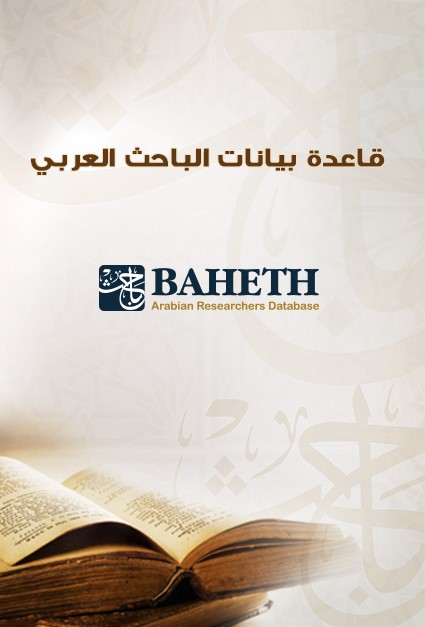
“BAHETH” in Architecture, Engineering, and Technology, is a peer-reviewed journal that publishes original academic research in the fields of Architecture, Engineering, and Technology. The journal welcomes research in the Arabic Language with an English Abstract. Papers submitted to this journal in Arabic must be presented in the English Language in the conference.
Find out more about BAHETH International Journal here.
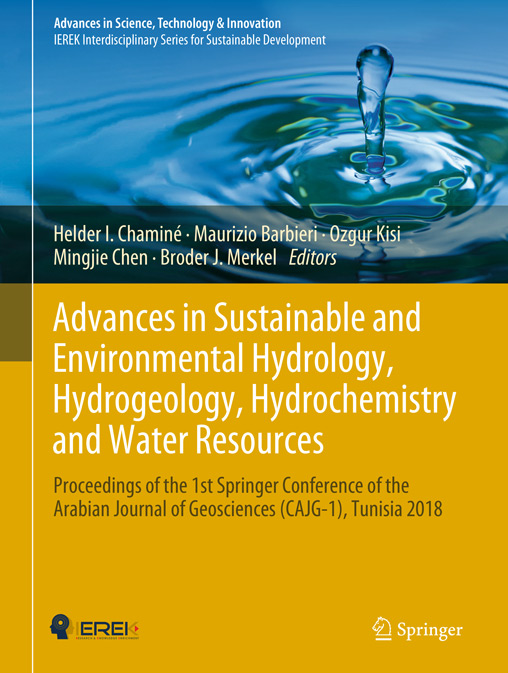
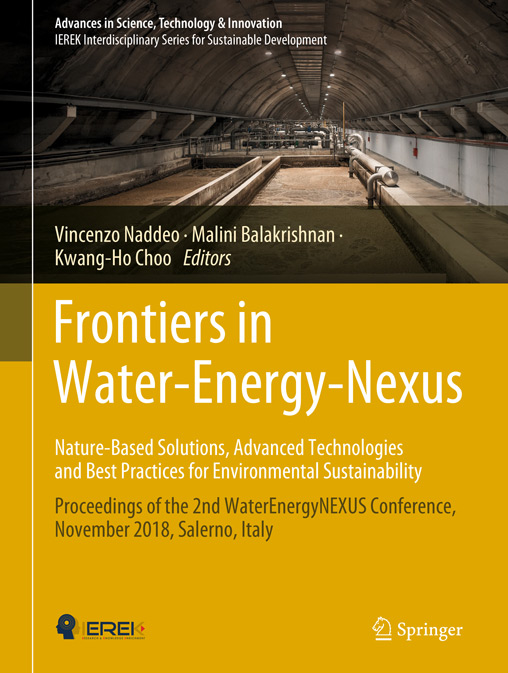
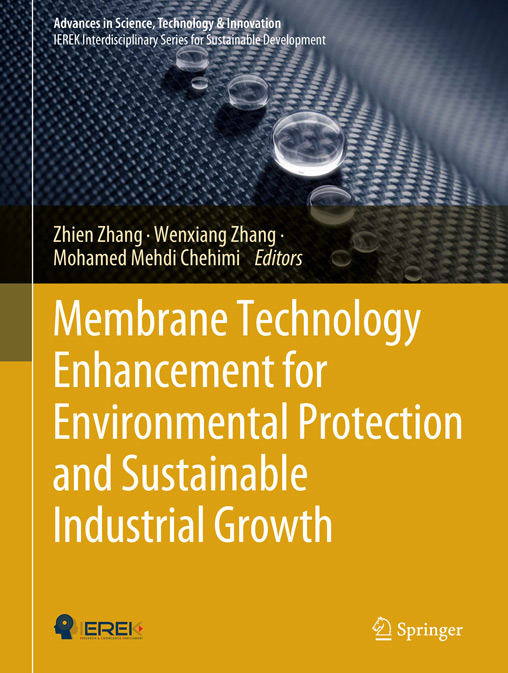

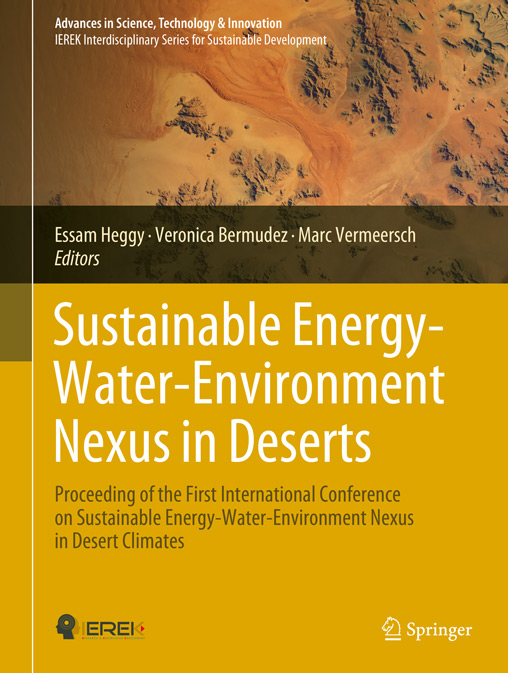

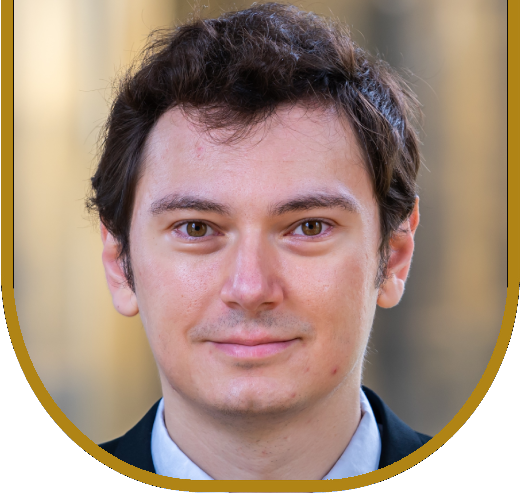

Attending a conference dramatically enhances both your professional and personal development. They help you sharpen the saw, meet and converse with industry experts, expand your resources and grow your professional network. IEREK Conference will help you:
1. Open Discussions: We bring together leading academic scientists, from different universities and countries, to exchange and share their experiences and research results.
2. Internationally Accredited Certificate: The participants are granted internationally recognized certificates acknowledged by IEREK, the University, and Partnering Organizations.
3. Publication: Selected high-quality manuscripts will be published, after peer review, in the Advances in Science, Technology & Innovation (ASTI) book series by Springer or in the Sustainable Landscape Planning and Natural Resources Management (SLNR) book series by Springer, or by IEREK Press Journals, both of which are indexed in world-renowned databases.
4. Research Technologies: Conferences can expand your resources by providing a great opportunity to promote gathered information on new technologies related to your research.
5. Networking: You can engage with industry experts to discuss with them the very latest research projects they could be working on and increase your chances of collaboration in future projects.
6. Academic Reputation: Attending many conferences will make you a known figure in academic circles and an active member of the academic community.
7. Conference Abstracts Material: Delegates will receive the conference Abstracts book in soft copy.
The Eiffel Tower, an architectural masterpiece standing at 324 meters, symbolizes the heart of Parisian charm. Completed in 1889 by Gustave Eiffel, it offers unparalleled panoramic views of the city from its observation decks. Illuminated nightly, the tower's graceful lattice design and cultural significance make it a must-visit landmark for millions of tourists annually.

2. Louvre Museum
A cultural treasure trove in the heart of Paris, is renowned for its vast and diverse art collection. Housed in a historic palace, the museum's iconic glass pyramid entrance welcomes millions of visitors each year. Home to masterpieces like the Mona Lisa and the Venus de Milo, the Louvre stands as a testament to the enduring legacy of human creativity and expression.

3. Montmartre and Sacré-Cœur Basilica
The Sacré-Coeur, consecrated in 1919, is one of the most iconic monuments in Paris. At the top of the Butte Montmarte, it has one of the most beautiful panoramic views of the capital, from 130 metres above ground. In a Roman-Byzantine style, the Sacré Coeur is recognizable by its white colour.
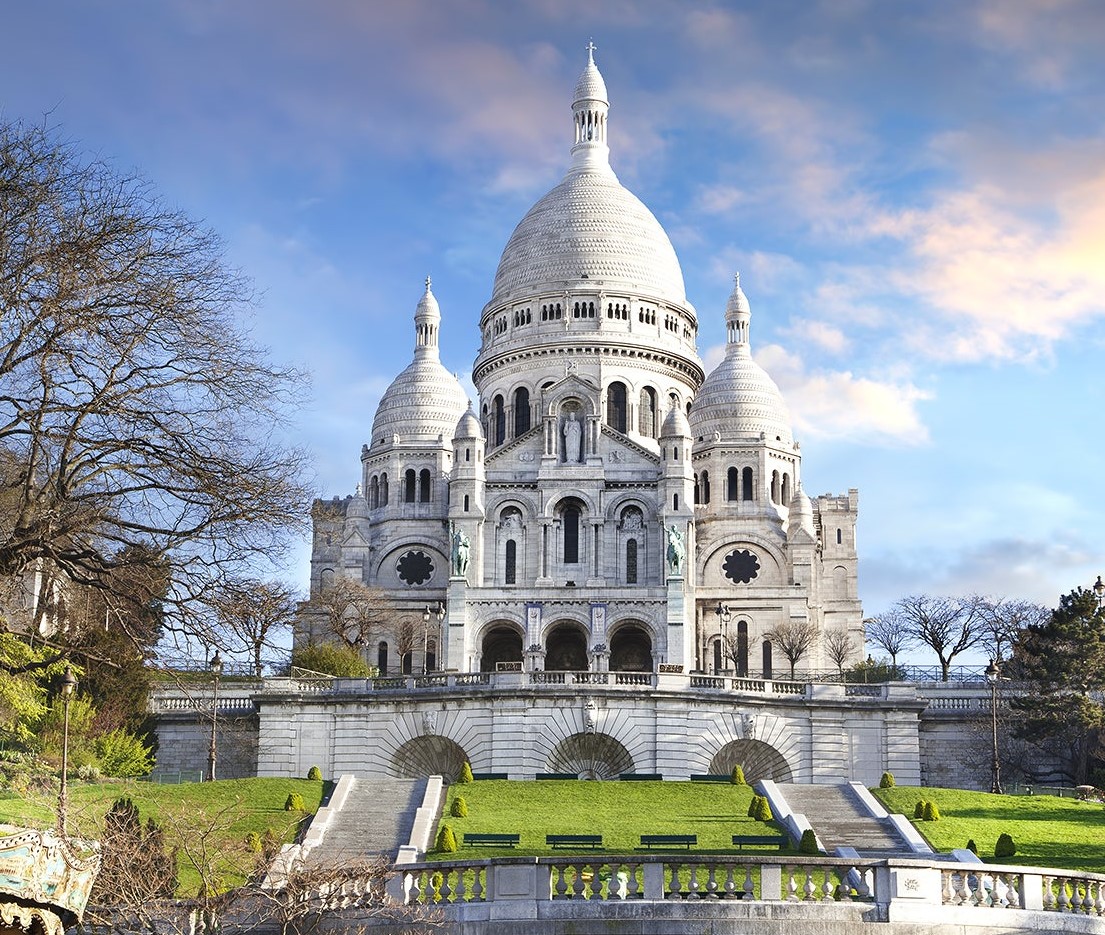
4. The Seine River
The Seine River gracefully winds its way through the heart of Paris, serving as a liquid ribbon connecting the city's iconic landmarks. Lined with charming bridges and quays, it offers a serene backdrop to the bustling metropolis.

5. Notre-Dame Cathedral
The Seine River gracefully winds its way through the heart of Paris, serving as a liquid ribbon connecting the city's iconic landmarks. Lined with charming bridges and quays, it offers a serene backdrop to the bustling metropolis.

6. Sainte-Chapelle
Sainte-Chapelle, nestled within the medieval Palais de la Cité on the Île de la Cité in Paris, is a jewel of Gothic architecture. Built in the 13th century by King Louis IX, its exquisite stained glass windows are a breathtaking testament to medieval craftsmanship. The chapel, with its delicate design and stunning colors, creates a luminous space that has captivated visitors for centuries.

7. Musée d'Orsay
The Musée d'Orsay in Paris is a cultural gem specializing in Impressionist and Post-Impressionist masterpieces. With its vast collection spanning the mid-19th to early 20th centuries, the museum showcases work by renowned artists such as Monet, Van Gogh, and Degas. Its grand interior and architectural elegance complement the artistic treasures on display, visiting the Musée d'Orsay a captivating journey through the evolution of art during a transformative period in history.

8. Arc de Triomphe
The Arc de Triomphe in Paris stands as an iconic symbol of France's rich history and grandeur. Designed by Jean Chalgrin, this monumental triumphal arch honors those who fought and died for France, particularly during the Napoleonic Wars. Its imposing stature and intricate carvings mesmerize visitors, drawing them into a realm of historical significance and architectural splendor. Positioned at the center of the Place Charles de Gaulle, it serves as a poignant reminder of France's enduring spirit and resilience. Ascending its spiral staircase offers panoramic views of Paris, rewarding explorers with a breathtaking vista of the city's timeless beauty.

From Paris Charles de Gaulle Airport CDG: you can travel with RER express network and have one change in Chatelet in the heart of Paris.
The venue is directly linked to Saint Lazare and Lyon train stations, for participants from France, reaching Paris by train.
In addition to taxi and Uber/Bolt, participants could use this link to find their way to Ibis: Click Here.
Here is a simulation for a travel from Paris Charles de Gaulle Airport (CDG) to Ibis: Click Here.
From Paris Orly Airport to Ibis: Click Here.

Mohamed M. Chehimi is Senior Researcher at French CNRS. He received a PhD in Physical Organic Chemistry from Université Paris 7 in 1988. His primary research fields are surface chemistry and XPS surface analysis. In particular, he is interested in developing diazonium salts as coupling agents in materials science, designing reactive and functional polymer grafts and nanocomposites. He recently started a new research program on biochar production and applications for sustainable development. He has 350+ research papers, 25+ book chapters and three patents to his credit, and has edited four books and six themed issues. He serves as Executive Editor-in-Chief of Chemistry Africa
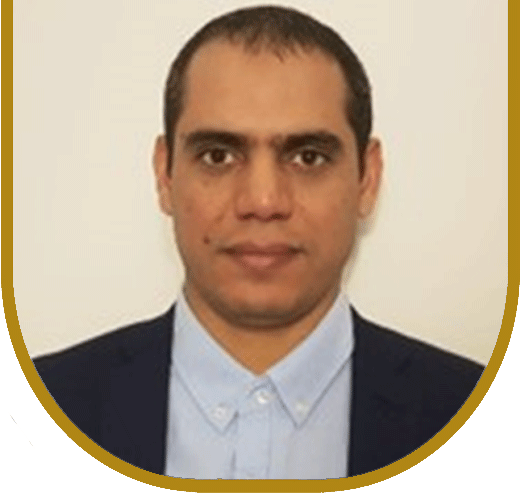
Dr. Kamel Eid received his BS in special chemistry from Al-Azhar University, A.R. Egypt in 2005, M.Sc. in applied chemistry from Helwan University, A.R. Egypt in 2011, and a Ph.D. from Changchun institute of applied chemistry, Chinese academy of sciences, P.R. China in 2016. He has more than 12 years of experience in academia and industry allowed him to work at the American University in Cairo, University of Chinese academy of sciences, Zhejiang University of technology, and Qatar University. He is now working in the center for advanced materials, Qatar University as a research fellow and as a visiting research fellow at RMIT University, Australia. His current research interests including developing novel synthetics approach for the rational design of nanostructured catalysts such as multi-metallic Pt-based nanocrystals, porous carbon-based nanostructures, and graphitic carbon nitride-based nanoarchitectonics for electrochemical energy conversion and production. Also, he has extensive experience in the field of gas conversion reactions and environmental remediation. He has more than 55 peer-reviewed articles in the field of catalysis for electrochemical energy conversion and nanomaterials. This is in addition to 5 US patents in the area of nanomaterials, gas conversion reactions, water desalination, and water treatments Dr. Aboubakr M. Abdullah is currently the Hydro/Qatalum Chair Professor at the Center for Advanced Materials at Qatar University since 2017. He has more than 26 years of experience in chemistry and materials science and engineering Research & Development, Industrial consultations, and project management since. He was awarded his bachelor's and Master's degrees in 1997 from Cairo University, Egypt and a Ph.D. degree from Pennsylvania State University, the USA in 2003. Besides his current position, he worked at Cairo University, Tokyo Institute of Technology, Calgary University, Egypt-Japan University of Science and Technology. He has published more than 100 peer-reviewed and 50 conference proceedings articles in the materials, energy, and environment research field in addition to one book chapter and filed and disclosed several intellectual properties. Furthermore, he has supervised many young professionals at the Master's and Ph.D. levels. His research interests including but not limited to energy conversion, water treatment, photocatalysis, and corrosion science and engineering.
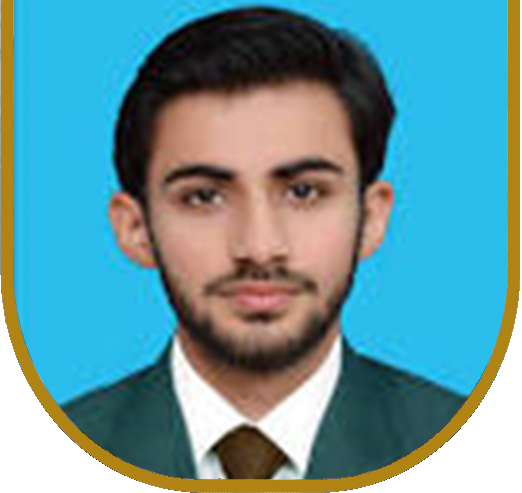
Muhammad Nihal Naseer is a Mechanical Engineering graduate from the National University of Sciences and Technology (NUST), Pakistan. He started his research career in 2018 at the Laboratory of Applied Sciences at NUST-Pakistan. His field of research is thermodynamic modeling of energy conversion and storage systems. In 2019, he was a scientific assistant at the NANOCAT research center at the University of Malaya, Malaysia. He has published over 20 research articles in peer-reviewed journals and conferences and has served as an editor of two books.
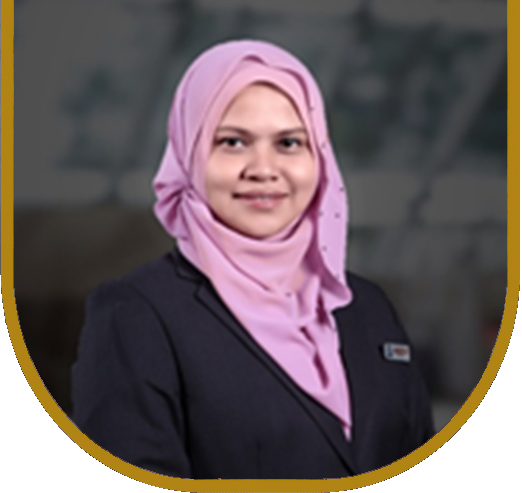
Juhana Jaafar is the lecturer of Gas Engineering Department, Faculty of Petroleum and Renewable Energy Engineering. Her professional expertise covers membrane material development for energy application and water and wastewater treatment. She is also extensively continuing to improve the membrane fuel cell technology by identifying product performance and commercialization barriers, and develop strategies to overcome them. Besides continuing to improve product qualities, she is also extensively introducing and promoting membrane technology for fuel cell applications by participating in the product exhibition competition and patent. She believed that the membrane fuel cell can be commercialized by educating people on this clean energy benefits to the mankind and environment.
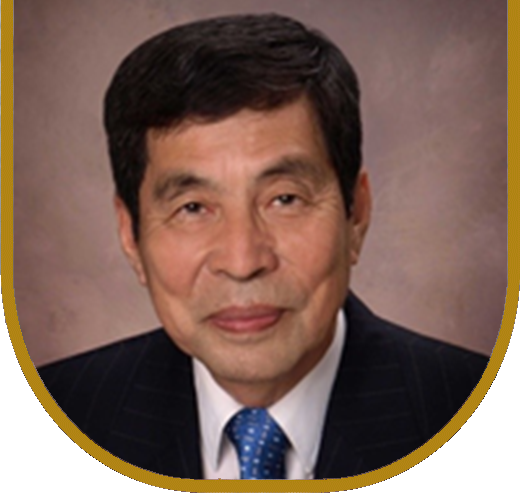
Professor Matsuura was born in Shizuoka, Japan, in 1936. He received his B.Sc. (1961) and M.Sc. (1963) degrees from the Department of Applied Chemistry at the Faculty of Engineering, University of Tokyo. He went to Germany to pursue his doctoral studies at the Institute of Chemical Technology of the Technical University of Berlin and received Doktor-Ingenieur in 1965. After working at the Department of Synthetic Chemistry of University of Tokyo as a staff assistant and at the Department of Chemical Engineering of the University of California as a postdoctorate research associate, he joined the National Research Council of Canada in 1969. He came to the University of Ottawa in 1992 as a professor and the chairholder of British (Consumers) Gas/ NSERC Industrial Research Chair. Currently, he is professor of the Department of Chemical Engineering and the director of the Industrial Membrane Research Institute (IMRI).
- For participants who need Entry Visas to the country where the conference will be held, IEREK will issue the corresponding invitation letter for accepted applicants to facilitate visa issuance.
- Please notice that we will endeavor to assist you in obtaining a visa but the responsibility is yours and the decision rests solely with the appropriate Embassy.
Invitation Letter Issuance Process
1- In case the participant is an author who has submitted a research paper to the conference, it must get accepted by the Scientific Committee
2- Required participation fees must be paid
3- The participant should send the following information to the conference's official email:
* A clear copy of passport
* Passport number
* Full name as written in your passport.
* Date of Issuing and Expiration
* Date of Birth
* Email address of the nearest Embassy/Consulate to you
* Mobile Number including country code
4- Conference coordinator will issue the needful invitation letter and send a copy to the participant's email, in addition to another one to the corresponding email address of embassy/consulate
5- The participant should print out the invitation letter along with all other required documents by the embassy/consulate and apply for VISA
|
Cancellation Policy |
Up to 60 days before the event |
Up to 50 days before the event |
Up to 40 days before the event |
39 days before the event |
|
Penalty |
20% |
50% |
70% |
100% |
EXCEPTION
A refund is not possible if
-An acceptance letter has been issued (Authors only)
-The proceedings of the event have been published (Authors only)
-A visa invitation letter has been issued (All participants)
Visa Rejection Cases
Reason and proof of rejection must be submitted. If the reason for rejection is due to an error on our part, the participant will be refunded their full fee with a deduction of a 20% administration fee.
Documents to be issued by IEREK to acquire a visa are as follows:
*Final Acceptance Letter (Authors only)
*Visa Invitation Letter
*Invoice/proof of payment
We encourage all authors and attendees to ensure their having acquired all documents (those applicable) mentioned.
If the reason for rejection is not related to any of the aforementioned and is an error on the participant’s part, the following will apply:
*Authors: may choose to let their co-author present his/her research on his/her behalf free of charge. If the author does not have a co-author, a member of the scientific committee shall present on the author’s behalf.
*Audience members/Registrants: will only be allowed to attend another similar event of their choosing that is organized by IEREK free of charge.

ORCID, which stands for Open Researcher and Contributor ID, is a global, not-for-profit organization that aims to provide unique identifiers for authors, researchers, and scholars. ORCiD effectively eliminates duplication and errors regarding author names, affiliations, previous works, and all related academic data.
IEREK is a proud member of ORCiD, and we contribute directly to their initiative of clear and identifiable markers for researchers and scholars. As the first Egyptian partner to ORCiD in the organization’s history, we strongly believe that by utilizing ORCiD’s database and verification services, we become one step closer to achieving an accurate, and identifiable academic landscape.
We encourage our authors to input their ORCiD ID when registering for one of our conferences, submitting an abstract, or a full paper. By doing so, you directly link your research to your identity and affiliation and can showcase your various academic efforts all in one place. By Registering your ORCiD ID, you also increase your works’ visibility and provide easy access to your entire library of research and academic activity.
Click here to learn more about ORCiD, and here to register your ORCiD ID for free.
The print ISSN number of the International Conference on "Sustainable Water Management, and Resource Adaptation" is 2974-4628
The online ISSN number of SWMRA conference is 2974-4636




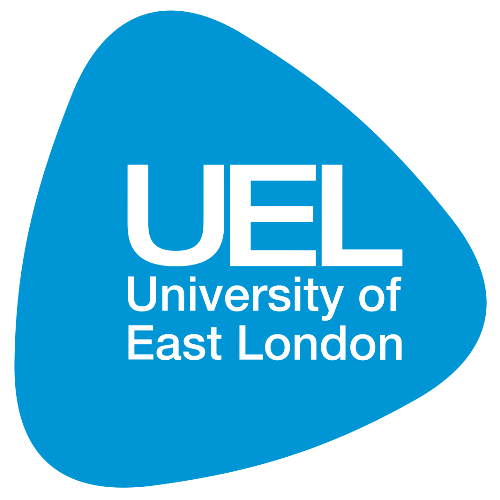







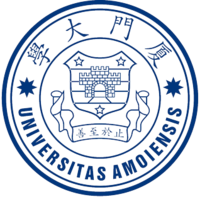

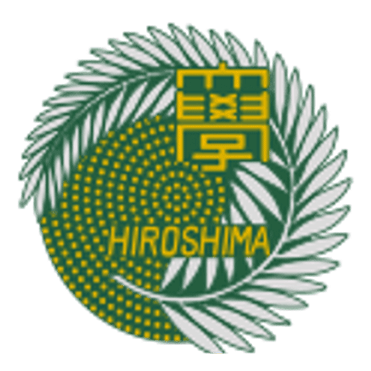
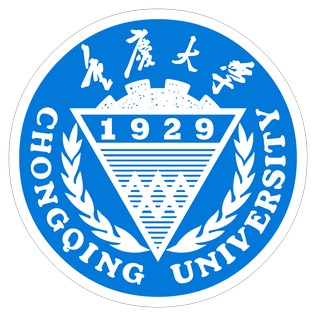
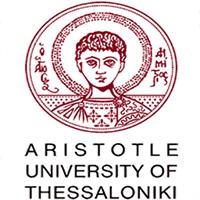
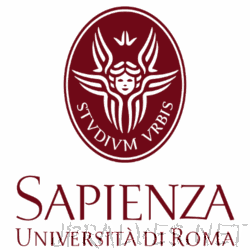
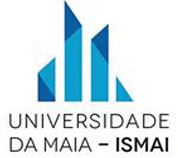



Research Director Université Paris Cité & CNRS (UMR 7086), ITODYS Lab

Full Professor of Raw Materials Engineering, Department of Chemical Engineering Materials & Environment, Sapienza University of Rome

Full Professor of Biogeochemistry of Engineered Ecosystems, Institute of Earth Physics of Paris, France
Raneem
Conference Coordinator
[email protected]
(+20) 3 5763827 | (+20) 3 5763828
(+20)1000028021
Subscribe to our newsletter
Join IEREK community